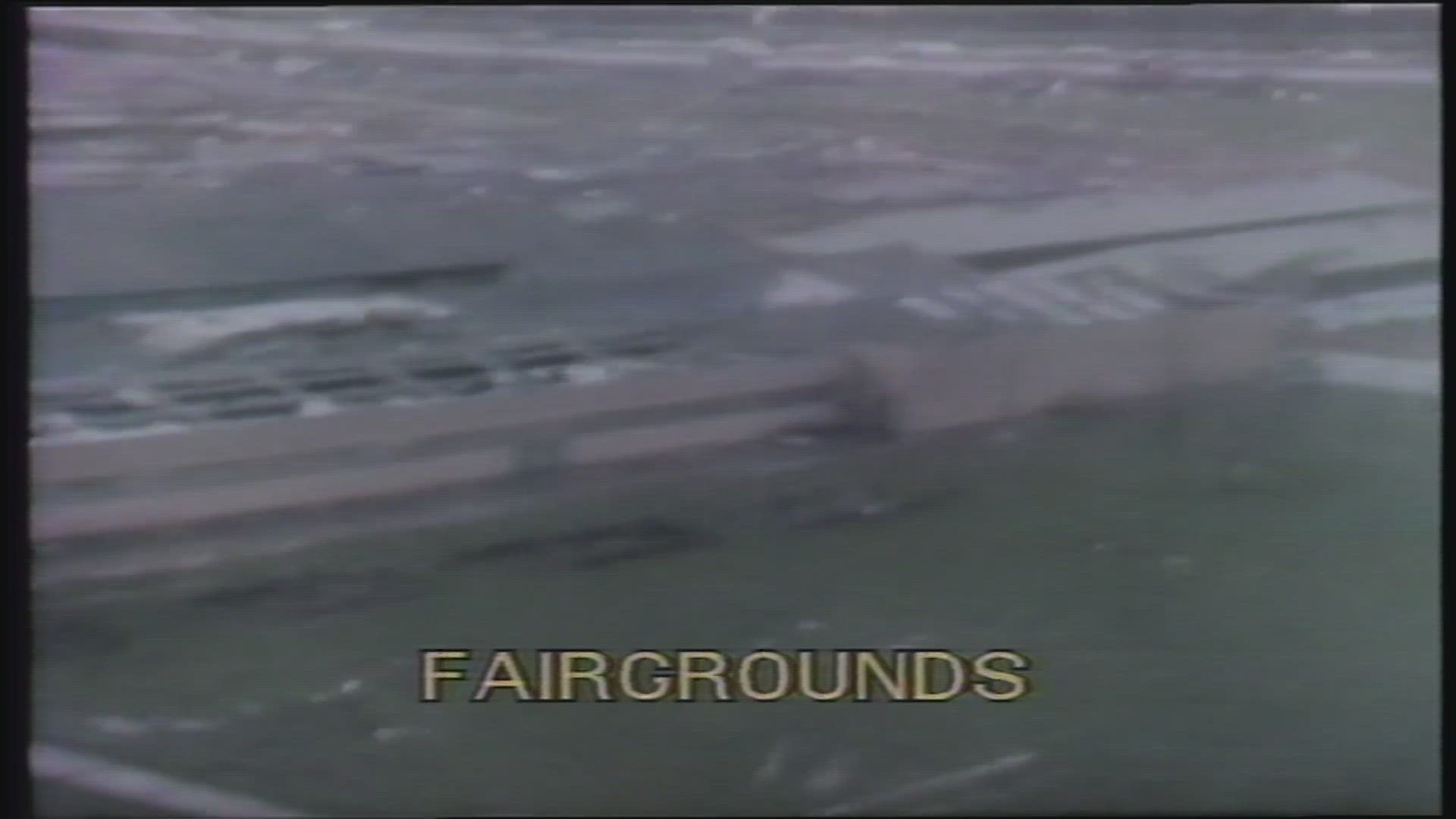LOUISVILLE, Ky. — Hunkered down in a basement when you’re just 10-years old, wondering if your house is getting ready to peel away above you is something you never forget.
Many Louisvillians, including myself, still recall memories of April 3, 1974.
It happened on a Wednesday – the same day of the week as the 50th anniversary in 2024.
We still know where we were and can detail every moment leading up to and after the monster tornado carved its way through Louisville.
Jefferson County Public Schools (JCPS) got us home safely from Lyndon Elementary School that afternoon. I remember getting off the school bus and looking up.
The sky was wild, dark and angry. We ran home, through the door and to the basement.
My mother was home and had WHAS11 on the television set. I remember seeing the evening news anchor Ken Rowland’s face on the screen. In the basement, we listened to WHAS radio. The riveting and life-saving aerial reports from traffic helicopter pilot Dick Gilbert were coming through the radio. He became the early doppler radar.
Gilbert stayed in the air and followed the tornado, expertly telling everyone which direction it was heading in real time as he watched it.
He grew up in Crescent Hill on Pennsylvania Avenue, a street that would be hit hard by the tornado he was chasing. Gilbert knew all of the streets of the city down below by name and he was warning people in the path to take cover.
WHAS TV and radio were the dynamic duo of broadcasting.
The combined staffs made them the biggest broadcast media in Kentucky. Gilbert, news anchor Byron Crawford, Glen Bastin and others saved lives that day.
It also helped that AM radio was widely popular in 1974 and WHAS owned the afternoon drive time in large part due to Gilbert’s daily traffic reports.
Our house survived and shockingly, we never lost power. I spent the rest of the evening watching Ken Rowland – no hysterics, no panic, all calm and just the facts.
Even years after I joined WHAS11, and now have the job he once held, I would interview him on April 3 anniversaries to get his memories. He never sensationalized it.
Rowland told me it was his job and what you saw is what you got with him.
Interestingly, WHAS11 had brought in a new co-anchor who was flashier than Ken, and the station was really promoting the new guy. On April 3, he was nowhere on the air. I asked Ken why? He said when the first touchdown was known, the news managers ran out to the newsroom and turned to the anchor who knew every neighborhood and alleyway and had grown up here. That was Ken.
Why is 1974 so important to you if you weren’t even alive or living in Louisville at the time?
Louisville is a much safer place to live when severe weather is approaching. We’ve really become over the top safe, a legacy of 1974. We have early warning. We did not have that in 1974. We have super radar systems that do what Gilbert had to do on April 3.
What were the TV radars back then? Retired WAVE-TV meteorologist Tom Wills told me at his retirement, that WAVE had purchased one of the old black and white scope radars out of a Delta Airlines jet and a studio camera would zoom into it to show it live.
The Louisville TV stations all started hiring fulltime scientists, meteorologists, to do the weather.
Prior to 1974, radio personalities or TV sales people had been doing the weather.
At WHAS11, the beloved Chuck Taylor was hired in 1975.
We live in what’s called “Tornado Alley” and up until 1974, we were sitting ducks.
It’s all why 50 years later, April 3 remains the date that will always be remembered, and respected, like yesterday.
Make it easy to keep up-to-date with more stories like this. Download the WHAS11 News app now. For Apple or Android users.
Have a news tip? Email assign@whas11.com, visit our Facebook page or Twitter feed.

